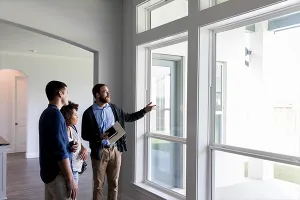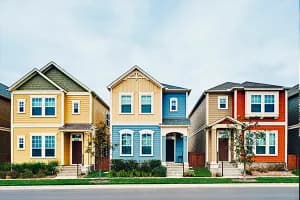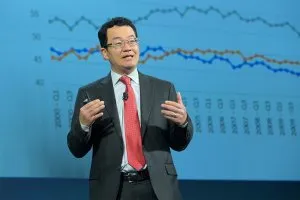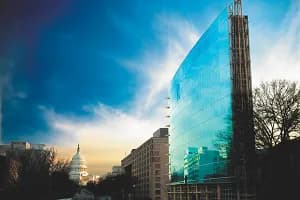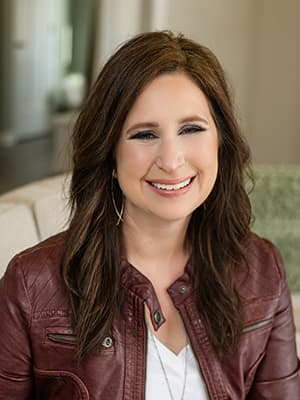
More homeowners are demanding spaces that don’t just look good but also make them feel good—and they’re paying a premium for it. Homes and communities designed around wellness are reporting resale values 10%–25% higher, and commercial properties are achieving rental premiums of 4.5% to 7.5% more per square foot, according to the Global Wellness Institute.
Wellness has surged to the top of home buyers’ wish lists. The America at Home Study, which surveyed 6,000 consumers nationwide, says wellness is the number one purchase motivator. Many respondents said they would be willing to trade off space for smaller homes—or even give up garages completely—in order to live in a place that better supports health and connection, the study found.
This growing demand is ushering in a trend for developers—wellness real estate—that’s focused on rethinking how people live. The Global Wellness Institute, a Miami-based nonprofit focused on preventative health and wellness, says wellness real estate is a $548 billion sector globally.
Why Wellness Matters
Research is backing up the movement.
GWI cites research showing that 80%–90% of health outcomes, disease risk and longevity are dependent on environmental and lifestyle factors—not genetics.
Clean air and water, natural light, safe streets, sustainability and opportunities for social connection directly impact longevity and well-being, says Teri Slavik-Tsuyuki, co-chair of the organization’s Wellness Communities and Real Estate Initiative and co-founder of the America at Home Study. Homes and even communities built to support wellness are reporting not only greater physical activity and health outcomes among residents but also lower rates of chronic disease—and higher satisfaction, too, the institute says.
What Is Wellness Design?
Wellness design is more than gyms or trails. It’s about building wellness into everyday routines—how people cook, relax and interact with neighbors. “It means creating homes and communities designed from the ground up that support health and well-being,” Slavik-Tsuyuki explains, adding that the nation’s building supply is still falling far short of achieving this rising demand.
Wellness design includes a focus on:
- Physical well-being: clean air, clean water, access to light, and spaces that encourage movement
- Mental health: quiet corners, restorative bathrooms and layouts that reduce stress
- Social connection: walkable streets, gathering spots and opportunities to engage with neighbors
- Financial wellness: attainable home sizes—often smaller and more flexible spaces that come with reduced operating costs
- Environmental sustainability: energy efficiency, storm resilience and smart use of natural resources
Inside the home, for example, homeowners are embracing biophilic design—natural finishes, more natural light, earth-tone color palettes and greater connections between their indoor and outdoor living spaces. The 2025 Houzz Bathroom Trends Study shows one in four homeowners use their primary bathroom for relaxation, prompting wellness upgrades like soaking or spa tubs, upgraded lighting such as dimmable light fixtures, and water features, including fountains or water walls.
At the community level, wellness means people-first design: narrower streets, wider sidewalks, bike lanes, shade trees and garages placed at the back of homes to encourage life and connection in front yards, Slavik-Tsuyuki says.
Buyers’ Top Wellness Priorities in Real Estate
The latest America at Home Study found a sizeable segment of buyers want features that enhance health, reduce costs and minimize environmental impact:
- Modern, well-equipped kitchens for cooking (29%)
- Energy efficiency: insulation, HVAC, lighting/appliances (25%)
- Clean water: whole-house water filtration system (22%)
- Clean air: whole-house, always-on air filtration (22%)
- Solar battery storage or backup power generator (18%)
At the community level, the study found the most desired amenities are:
- Access to nature for outdoor activities (54%)
- Walkability to coffee shops and casual eateries (49%)
- Trails (48%)
- Small neighborhood parks with seating and shade (45%)
- Large parks and event spaces (44%)
Communities Being Built for Wellness
Some developers are leading the way in the wellness movement. Rancho Mission Viejo in Orange County, Calif., preserves 75% of its land as open space for its 14,000 residences. It’s paying off: 83% of residents say living there better supports their wellness, and resale prices are 12% higher than nearby communities, The Global Wellness Institute’s research finds.
Babcock Ranch in southwest Florida is often called the nation’s first planned community designed with health, wellness and sustainability at its core. Planned by developer Syd Kitson, it spans 18,000 acres with 20,000 homes planned, 6 million square feet of commercial space and more than 100 miles of trails. It’s powered largely by solar energy and integrates schools, parks and dog parks, and resilient infrastructure.

“The pandemic really put wellness on its jets,” Kitson says. “Today, when homeowners make a decision about where to live, health and wellness are among their top reasons.”
At Babcock Ranch, events like Food Truck Fridays, weekend concerts and everyday walkability foster social connection and staying active. The town’s infrastructure was built to withstand storms and has already proven its resilience through multiple hurricanes. Housing options are plentiful at Babcock Ranch, appealing to a variety of price points, with single-family homes from the $200,000s to more than $1 million, plus offerings of condos, townhomes, apartments and single-family rentals.
“When I drive around and see families interacting and enjoying this lifestyle—that’s what it’s all about,” Kitson says. “At Babcock Ranch, I know we’ve given people the best opportunity to live a good, healthy and safe life.”
Home buyers are increasingly showing a willingness to trade off extra space in the home and take a smaller home in order to live in a place that offers a better lifestyle experience and social connection, Slavik-Tsuyuki says. “There’s a seismic shift ahead in real estate—and it’s our opportunity and obligation to make it happen.”
